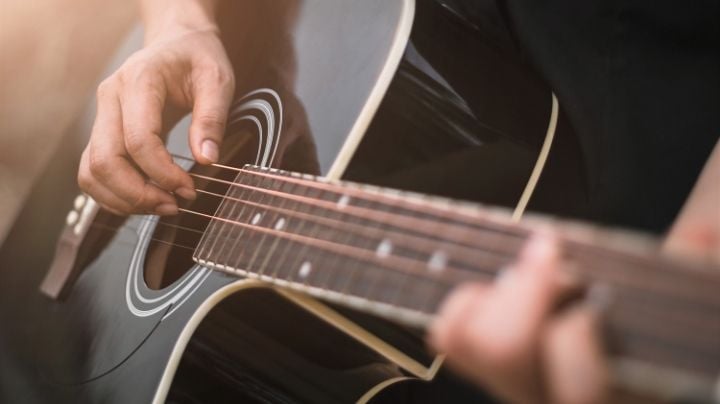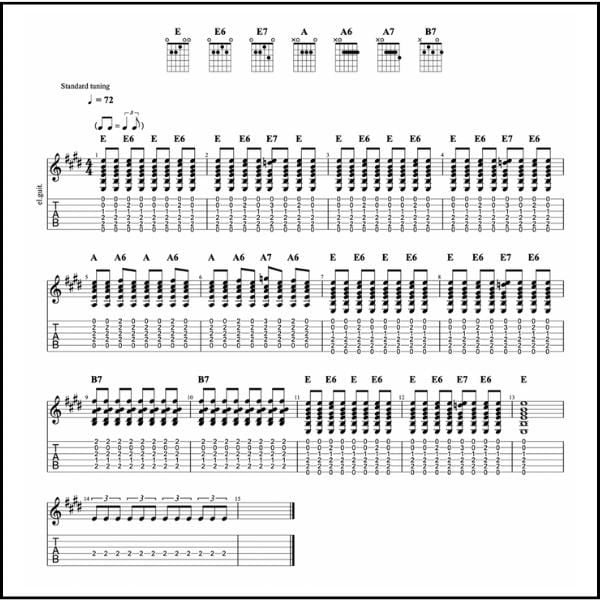Rockabilly Chord Progression

This articles comes from Gary Heimbauer for Guitar Tricks and 30 Day Singer.
Rockabilly, much like the blues, often features a 12 bar chord progression that features the I, IV, and V chords, and it’s played with a swing feel. The chords are played as either basic major chords, 6th chords (1-3-5-6), or 7th chords (1-3-5-b7). In this post, I’d like to share with you an easy chord progression in the key of E that does all of this!
It’s a 12 bar progression that goes like this:
E-E-E-E
A-A-E-E
B7-B7-E-E
However, we can give the E and A chords a Rockabilly feel by alternating from beat to beat between a basic major chord and a major 6th chord, and once per two measures, we’ll also add the b7th to make it a 7th chord. That will give it a little bit of blues flavor!
Here is the TAB for the chord progression:

The technique on the E chord is to play it the standard way in open position, but then use the pinky to alternate between adding the 6th (B string 2nd fret) and the b7th (B string 3rd fret).
If you want to dive deeper into this subject, try online guitar lessons.
On the A chord, we can do the same thing, but we have to finger that chord in a unique way in order to toggle back and forth between the 6th and b7th. Play the basic A chord by putting your index finger on the second fret of the G string, your middle finger on the second fret of the D string, and your ring finger on the second fret of the B string. This will give your pinky a little more room to then alternate between the open high E string, and then the second fret of the high E string to add the 6th, and the 3rd fret of the high E string to add the b7th.
To really nail this one, be sure to swing those 1/8th notes, keeping a constant down/up strum going!
More Blog Posts Related to Guitars
- How to Choose, Tune, & Play Your First Guitar: Beginner Tips
- What’s the Best Option for Beginner Guitarists – An Acoustic or Electric Guitar?
- How to Choose Your First Acoustic Guitar (Do’s and Don’ts)
- Best Guitar Tips For 2023
- Guitar Maintenance: How To
- Iconic Guitar Parts In Movie Soundtracks
- Alternate Picking Techniques

